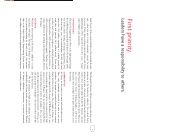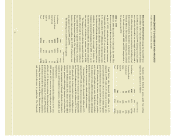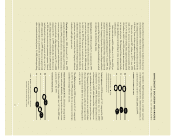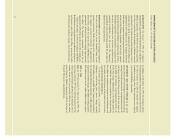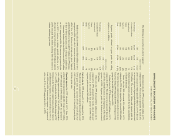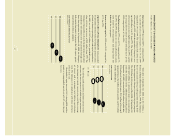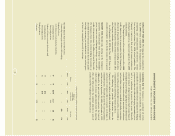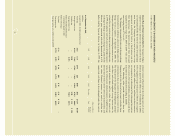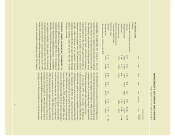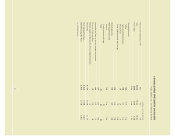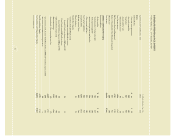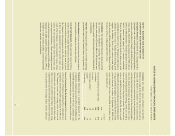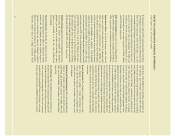Tyson Foods 2000 Annual Report Download - page 27
Download and view the complete annual report
Please find page 27 of the 2000 Tyson Foods annual report below. You can navigate through the pages in the report by either clicking on the pages listed below, or by using the keyword search tool below to find specific information within the annual report.
MANAGEMENT’S DISCUSSION AND ANALYSIS
TYSON FOODS, INC. 2000 ANNUAL REPORT
IMPACT OF YEAR 2000 The Company has completed its
Year 2000 Project as scheduled. The Company’s products,
computing and communications infrastructure systems
have operated without Year 2000 related problems. The
Company is not aware that any of its major customers or
third-party suppliers has experienced significant Year 2000
related problems.
The Company believes all its critical systems are Year 2000
ready; however, there is no guarantee that the Company has
discovered all possible failure points including all systems,
non-ready third parties whose systems and operations affect
the Company and other uncertainties.
As of September 30, 2000, the Year 2000 Project was
considered complete and no further actions were required.
MARKET RISK Market risks relating to the Company’s
operations result primarily from changes in commodity
prices, interest rates and foreign exchange rates as well as
credit risk concentrations. To address certain of these risks
the Company enters into various hedging transactions as
described below. Financial instruments that do not qualify
for hedge accounting are marked to fair value and the gains
or losses are recognized currently in earnings.
Commodities Risk The Company is a purchaser of certain
commodities, primarily corn and soybeans. The Company
periodically uses commodity futures and options for hedging
purposes to reduce the effect of changing commodity prices
and as a mechanism to procure these grains. Generally,
contract terms of a hedge instrument closely mirror those of
the hedged item providing a high degree of risk reduction and
correlation. Contracts that effectively meet this risk reduction
and correlation criteria are recorded using hedge accounting.
Gains and losses on closed hedge transactions are recorded as
a component of the underlying inventory purchase.
The following table provides information about the
Company’s corn, soybean and other feed ingredient inventory
and financial instruments that are sensitive to changes in
commodity prices. The table presents the carrying amounts
and fair values at September 30, 2000, and October 2, 1999.
Additionally, for puts and futures contracts, the latest of
which expires or matures eight months from the reporting
date, the table presents the notional amounts in units of
purchase and the weighted average contract prices.
volume and dollars in millions, except per unit amounts
Weighted
average strike
Volume price per unit Fair value
2000 1999 2000 1999 2000 1999
Recorded Balance Sheet Commodity Position:
Commodity inventory (book value of $33 and $34) ––––$33 $34
Hedging Positions
Corn futures contracts (volume in bushels)
Long (buy) positions 17 84 $2.50 $2.21 (9) (8)
Short (sell) positions –1–2.32 ––
Soybean oil futures contracts (volume in cwt)
Long (buy) positions 9–0.16 –––
Short (sell) positions 6–0.16 –––
Trading Positions
Corn puts –28 –2.10 –(3)
25




